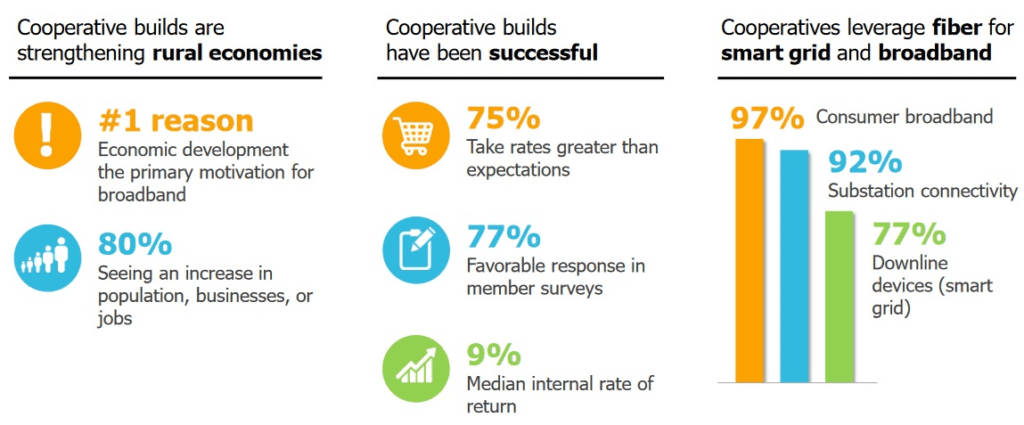2022 Benchmarking Report Finds Electric Broadband Projects Have Been Successful
Randy Sukow
|

Electric cooperatives operating broadband networks are becoming commonplace in much of rural America. But more importantly, in the places where co-ops have ventured into broadband, those services have been successful beyond expectations. Average take rates are 46 percent and 75 percent of the time are greater than predicted in feasibility studies, according to “Rural Electric Cooperative Broadband Benchmarking Report 2022 Refresh,” which tracks the broadband business results and experiences of 88 co-ops in 29 states. The median internal rate of return is 9 percent.
The 2022 Refresh is an update and expansion of NRTC’s first benchmarking report in 2020. NRECA joined NRTC to produce the new report, which contacted more rural electric utilities to gather more information. The 2022 report tracks changes in certain categories and begins examining more aspects of the broadband business.

“This report will be a valuable resource to electric cooperatives as they determine their position in broadband and plan their technology future,” NRTC CEO Tim Bryan and NRECA CEO Jim Matheson said in a joint email to introduce the report. “Just like there’s no single path for broadband, there’s no one way to use this report. Each co-op will glean different insights and therein lies the value of this effort.”
Among the report’s more significant findings:
- More cooperatives are turning to advanced fiber technologies, such as XGS-PON, more often than they did two years ago.
- That is leading to faster data plans for customers, with most offering 1 Gbps symmetrical service.
- Cooperatives have entered partnerships with many different business structures to begin projects. Partnerships tend to be most common in higher-population areas where there is more likely to be broadband competition.
- Congress has allocated large sums to support rural broadband projects over the past two years, and rural electrics are taking advantage of it. Ninety-two percent of respondents have received at least one grant and 63 percent have received more than one. At the same time, 90 percent continue to rely on cooperative lenders to complete their financing.
- However, construction costs are rising due to material and labor shortages. The cost of recent projects has risen 29 percent.
The report includes a chapter on the specific broadband technologies that cooperatives choose, with fiber optics being the dominant theme. There is a preference for all-dielectric self-supporting (ADSS) aerial fiber cable deployment techniques. Newer projects typically deploy XGS-PON, which can deliver up to 10 Gbps symmetrical. Eighty-nine percent of projects that have been serving customers for less than one year are using XGS-PON. Many older projects that originally built with slower technologies are upgrading to XGS-PON.
Editor’s Note: The lead paragraph of an earlier version of this item incorrectly reported average take rates. We have corrected the error.


